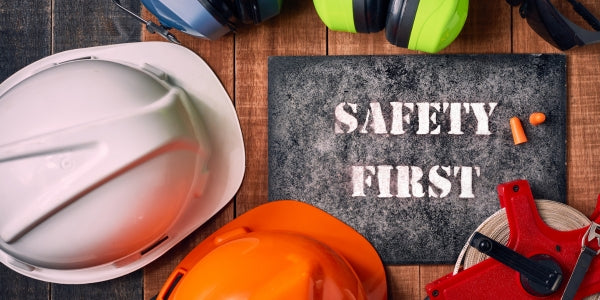
10 Safety Measures for Epoxy Flooring Application
Epoxy flooring is known for its strength, visual appeal, and low maintenance requirements. However, like all building materials, it demands careful attention to safety during installation and use. Whether you're a seasoned professional or a DIY enthusiast, observing crucial safety measures is vital to prevent mishaps and harm. Here are ten key safety tips to bear in mind when working with epoxy flooring:
-
Ensure Adequate Ventilation
Maintain proper airflow in the workspace to disperse fumes produced during epoxy application. Epoxy coatings contain volatile organic compounds (VOCs) that can be harmful if inhaled excessively. Open windows, utilize exhaust fans, or any other means to enhance ventilation and reduce exposure to fumes.

-
Personal Protective Gear (PPG)
Equip yourself with suitable personal protective gear such as safety goggles, gloves, and respiratory masks when handling epoxy materials. PPG safeguards your eyes, skin, and respiratory system from contact with epoxy resin, hardeners, and solvent vapors.
-
Protect Your Skin
Prevent direct contact between your skin and epoxy products as they can cause irritation or allergic reactions. Wear long-sleeved clothing along with closed-toe shoes to shield your skin from epoxy exposure; promptly wash off any spills on your skin using soap and water.

-
Safeguard Your Eyes
Wear safety goggles or a full-face shield to protect your eyes from splashes or spills of epoxy materials that could cause irritation or injury upon contact; rinse eyes with clean water immediately if exposed and seek medical assistance if irritation persists.

-
Respiratory Protection
Reduce inhalation of epoxy fumes by donning a respirator or mask designed for organic vapors especially vital in confined spaces where fumes can accumulate posing health risks; ensure proper ventilation for fresh air intake as well.
-
Ensure Slip Resistance
Eliminate hazards in the work area while providing clear signage indicating wet or slippery surfaces due to glossy floors created by epoxy coatings which may pose slipping risks; incorporate anti-slip additives or textured finishes for enhanced traction.
-
Fire Safety
Exercise caution when working near open flames as epoxy resin and hardeners are flammable liquids that could ignite when exposed to heat sources; keep fire extinguishers nearby adhering strictly to fire safety protocols.

-
Proper Waste Disposal
Dispose of excess epoxy according to local regulations avoiding contamination of water sources by not pouring it down drains but using designated waste containers.
-
Emergency Preparedness
Clean up spills promptly utilizing spill kits while adhering strictly to established spill response procedures, notifying relevant personnel immediately.
-
Training & Supervision
Ensure individuals working on the project receive adequate training on safety protocols, supervising inexperienced workers closely, fostering open communication regarding safety concerns throughout the process.
By adhering diligently to these essential safety precautions, you can mitigate risks creating a secure working environment during the application of epoxy flooring, prioritizing the well-being of yourself, team members, and surroundings.


